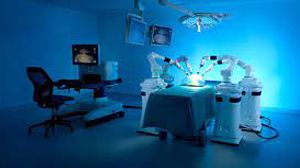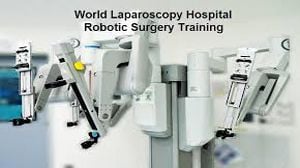Abdominal Entry Technique in Laparoscopic Surgery
Add to
Share
1,580 views
Report
2 years ago
Description
Title: Abdominal Access (Entry) Technique in Laparoscopic Surgery Introduction: Laparoscopic surgery, also known as minimally invasive surgery, has revolutionized the field of surgical procedures by offering patients numerous advantages over traditional open surgery. One crucial step in laparoscopic surgery is gaining access to the abdominal cavity. The abdominal access technique plays a pivotal role in ensuring safe entry into the peritoneal cavity while minimizing complications. This essay aims to discuss the various abdominal access techniques commonly used in laparoscopic surgery and highlight their benefits and potential complications. Types of Abdominal Access Techniques: Veress Needle Technique: The Veress needle technique is one of the most traditional methods used to access the abdominal cavity in laparoscopic surgery. It involves the insertion of a needle into the abdominal cavity to establish a pneumoperitoneum, which is the creation of a space within the peritoneal cavity by insufflating carbon dioxide gas. The Veress needle technique is cost-effective, requires minimal equipment, and can be easily performed. However, it demands precise needle insertion to avoid complications such as organ injury or vascular damage. Open Hasson Technique: The open Hasson technique is a safe and reliable method for gaining access to the peritoneal cavity. It involves creating a small incision in the abdomen and inserting a trocar under direct vision. This technique provides visual confirmation of entry and allows for controlled access to the peritoneal cavity. It is particularly useful in patients with previous abdominal surgeries or those at high risk for adhesions. However, the open Hasson technique requires a larger incision, which may increase the risk of wound complications. Optical Trocar Technique: The optical trocar technique utilizes a specialized trocar with a built-in optical system, such as a camera or fiber-optic light source. This technique provides direct visualization during the entry process, reducing the risk of injury to underlying organs. The optical trocar technique offers enhanced safety and precision, especially in patients with a higher risk of adhesions or obesity. Nevertheless, this method requires specialized equipment, which may increase the cost of the procedure. Balloon Dilatation Technique: The balloon dilatation technique involves the use of a balloon-tipped trocar for abdominal entry. The trocar is inserted through a small incision, and the balloon is inflated to create a working space for subsequent trocar placement. This technique minimizes the risk of injury to underlying organs and vessels, and it allows for gentle dilation of the abdominal wall. However, it requires careful monitoring and precise placement to avoid potential complications such as balloon rupture or injury during balloon deflation. Benefits and Potential Complications: The choice of abdominal access technique depends on several factors, including patient characteristics, surgical indication, surgeon preference, and equipment availability. Regardless of the technique used, the primary goal is to ensure safe entry into the abdominal cavity while minimizing complications. Benefits of a well-executed abdominal access technique include reduced postoperative pain, shorter hospital stays, faster recovery, and improved cosmetic outcomes. However, abdominal access techniques are not without potential complications. Some common complications associated with these techniques include visceral or vascular injury, port-site hernia, infection, subcutaneous emphysema, and gas embolism. Surgeons must maintain a high level of expertise and adhere to strict safety protocols to minimize the occurrence of such complications. Conclusion: The abdominal access technique is a critical step in laparoscopic surgery, and the choice of technique should be individualized based on patient characteristics, surgeon experience, and available resources. Each technique has its own set of advantages and potential complications. The selection of the most appropriate technique requires careful consideration and knowledge of the patient's specific needs. By adhering to established safety guidelines and utilizing advanced equipment, surgeons can enhance
Similar Videos






